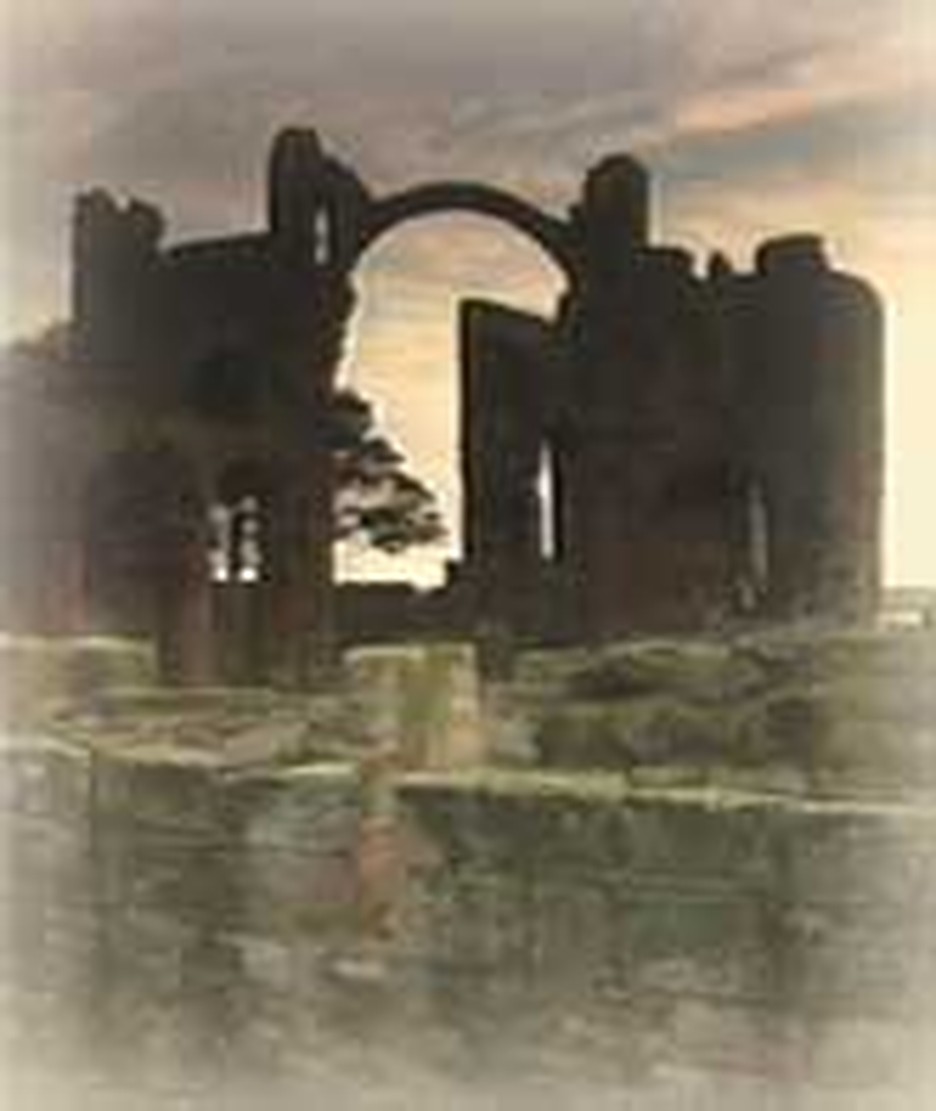
A monk shouted. His fellow monks looked his way, their eyes following his finger that pointed out to sea. Ships!
On the little island of Lindisfarne, off the coast of Northumbria, England, the monks must have felt fear as the ships came closer. Their rowers were armed and warlike. As the men leaped from their ships with terrifying yells, there could be no doubt. This was a raid!
Although Christian in name, Northumbria's understanding was clouded by its pagan past. The people still believed in omens. And that year, there had been many such signs which, according to the Anglo-Saxon Chronicle, "miserably frightened the people. These were immense flashes of lightening, and fiery dragons were seen flying in the air. A great famine immediately followed these signs; and a little after that in the same year..."
A little after that, on this day, June 8, 793, Vikings attacked the church on Lindisfarne island. The raiders hacked the monks to death or dragged them into the sea and drowned them. They were after the unguarded treasures of Lindisfarne's rich and beautiful sanctuaries.
Many people had given the monastery silver and gold, some of them believing their souls could find peace through such gifts and the prayers offered because of those gifts. On the island were golden crucifixes and coiled shepherd's staves. There were silver plates for the bread and wine of mass, and ivory chests in which reposed the relics of saints. The chapel walls hung with shimmering tapestries and in the writing room one could find some of the most beautiful illuminated manuscripts ever made.
When the Vikings left, all of this was either destroyed or bagged in the bottom of their boats. The monks lay dead around their altars.
This was the first major Viking attack recorded in England. Few had even contemplated such a raid from the sea. That the first blow fell where it did shocked a people who thought of the dead saints as powerful intercessors. Alcuin, the greatest scholar of the day, was an Englishman living in the court of Charlemagne. He wrote, "What assurance is there for the churches of Britain, if St. Cuthbert, with so great a number of saints, defends not its own?"
As we know, the Vikings had only begun. Over the course of the next two years, they were back for more easy pickings, attacking other wealthy religious houses. Their invasions were repeated for over a century. Eventually, when England had been bled of its wealth, the Vikings began to take the land, too.
Bibliography:
- Anglo-Saxon Chronicle.
- Edmonds, Columba. "Ancient Diocese and Monastery of Lindisfarne." The Catholic Encyclopedia. New York: Robert Appleton, 1914; and other articles, such as "St. Cuthbert."
- "Holy Island - Lindisfarne" Northeast England History Pages http://www.thenortheast.fsnet.co.uk/Lindisfarne.htm
- "Lindisfarne." The Oxford Dictionary of the Christian Church. Edited by F. L. Cross and E. A. Livingstone. Oxford, 1997.
- Miles, George, of Newcastle-on-Tyne. The Bishops of Lindisfarne , Hexham, Chester-le-Street, and Durham, A.D. 635-1020. Being an introduction to the ecclesiastical history of Northumbria. London, W. Gardner, Darton & co., 1898.
- The Age of Bede; translated by J.F. Webb ; edited with an introduction by D.H. Farmer; Lives of the abbots of Wearmouth and Jarrow translated by D.H. Farmer. Harmondsworth, Middlesex, England; New York, N.Y., U.S.A. : Penguin, 1988.








